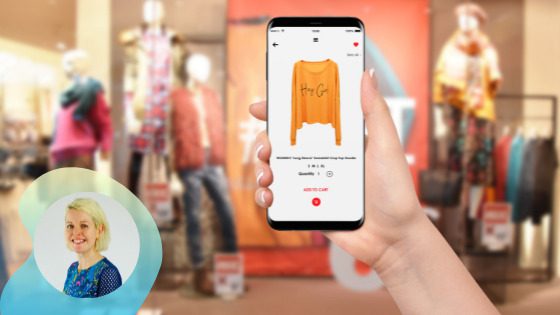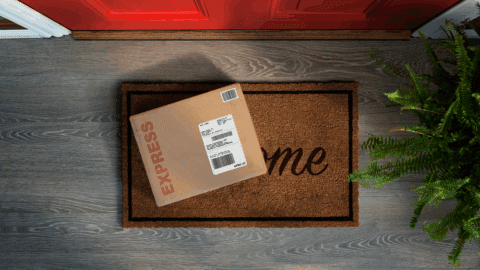As change takes place at ever faster rates, speed and agility become king.
Retailers know that instead of being ahead of the curve, they need to be IN the curve, responding to changes as they happen.
For pureplay online retailers, this is standard stuff. But how can physical stores achieve newly required levels of flexibility?
Physical Flexibility
One of the simplest ways to build agility into stores is to physically keep everything as flexible and fluid as possible.
Of course, the pop-up achieves this. Some of our clients aren’t sure whether pop-ups can be classy, but rest assured that with the right approach, pop-ups can achieve great results for even the pinnacle of luxury brands.
Smaller-footprint stores also offer more flexibility. For one, they can be located closer to customers, but they also are easier to optimize than giant spaces.
Consider flexible fittings, such as curtains for partitioning stores, moveable displays and shelves on wheels. This gives the space more uses throughout the day — for example, evening classes and events can be hosted after hours when shelves can easily be wheeled into a corner. Different stock and displays also can be showcased at the relevant time of day — such as placing breakfast foods at the front of the space in the morning.
It’s no longer a given that retailers actually have to dedicate store space to hold stock. They can store most of their stock off-site and request it in as required. This approach is used by Matches Fashion at its London store.
As a result, Matches can focus the store on the customer experience, knowing that requested products will arrive in 90 minutes. The growing trend of superfast hyperconvenience, which sees grocery start-ups delivering products in as little as 10 minutes from an order being placed, means this will only get faster.
Retailers also can build more flexibility into their physicality by pushing for flexible leases. Everything from lease length to usage is increasingly open to discussion, making it easier for retailers to adapt to change.
The Data-Driven Store
All retailers know how important it is to listen to their customer, particularly when new wants and behaviors can now emerge so quickly.
Going to the source directly via social media, surveys and conversations with staff is one way to gather this information. But what customers say they want, and what they actually do, are sometimes two different things. That’s where understanding customer behavior through data comes in. Every interaction they have with a brand, online and offline, can be used to tailor and optimize the experience.
The store can also be optimized through data — heat maps can show underutilized space that require more attention from the business. Stores can now A/B test window displays, keeping and building on the learnings from the best-performing designs.
Retailers can even use data such as footfall to determine where they should position their stores in the first place. Ecommerce and social media data can help retailers identify pockets of demand with the best in-person opportunity — whether for a store, pop-up or event.
One of the fastest ways to embed agility is to implement simple rules. For instance, committing to trialing two new ideas in each store each month. This rule is relatively simple to set and roll out, yet ensures that every space stays optimized and evolving. As part of this, retailers should create ways to share learnings and best practice between stores. Solutions like Quorso pull in data from across the business to create tailored recommendations for each store.
By setting each store the task of carrying out their own experiments, retailers turn their store networks into learning networks. This breaks from the standard approach of putting stores in competition with each other, which can stifle learning, change and growth.
Embrace Technology
New technologies present new possibilities for profitability. Companies such as Unspun and Alton Lane build in flexibility with small batch and on-demand production. This also reduces risk as they don’t have to predict what people want — or worry that they’ll be left with unsold stock.
Although digital screens are now commonplace, they can be utilized in a more dynamic way. They can tailor what they show to the customers in the store, perhaps using facial recognition or by inviting customers to check into the store on the retailer app. It’s also possible to factor in weather conditions, surplus stock or even items trending locally on social media.
Clienteling technology like Tulip offers retailers flexibility as they can continue messaging customers once they have left the store. This continues the valuable relationship, even if they never visit in-person again. Staff have more ways to serve customers better: they can view the full range of online stock, find out detailed product information or order items to be delivered to the customer’s home.
At its LA store, BeautyCounter makes its store work harder by livestreaming shoppable content from an in-store set. BeautyCounter’s tutorials and Q&As create online content that help it make sales from anywhere.
If recent events have taught us anything, it’s that we don’t always know how the world will change. Brands embracing these adaptable design strategies will get the most success and certainty in an uncertain future.
Which of these will you implement in your stores? If you’d like some advice around the best strategy for your store network, feel free to book a short chat via LinkedIn.
Cate Trotter is Head of Trends at leading retail optimization consultancy Insider Trends. She has been named one of the most influential people in retail on many occasions, and has helped brands such as Chanel, Galeries Lafayette, Hugo Boss and Tesco with their retail strategies.








